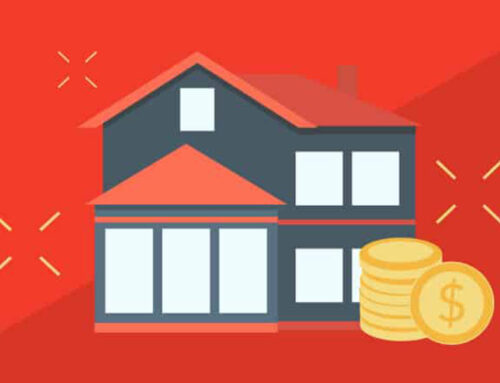The recession hit many real estate investors with a huge learning curve, myself included. As property prices were soaring in the early 2000s, I became more focused on how much my properties were worth according to the market and less focused on their capitalization (cap) rate–how much money my investments were generating each month. Of course, when the crash happened, all of that potential value was wiped off my properties.
In the boom, I forgot that the key to successful rental investment isn’t just about how much your property is worth, it’s about maintaining a solid cash flow from your investments. The more money I can get from a property in relation to its value, the safer an investment it becomes. That’s why, today, we’re going to explore how you can maximize cap rate to ensure your Chicago cash flow investment properties are generating as much income as possible.
What is a Cap Rate for Cash Flow Investment Properties in Chicago?
Before diving in, though, let’s take a second to recap what a cap rate is. A property’s cap rate is the amount of revenue it will generate in relation to its operating costs. As such, the cap rate is equal to the property’s net annual income (minus expenses) divided by its market value.
Cap rate = net annual income / market value
The higher the cap rate, the greater the risk—and vice versa. If you want your property to be as profitable as possible, you must look at ways to increase the top line of that equation–your net annual income. Chicago’s current market provides two key ways for real estate investors to squeeze as much out of their cash flow investment properties as possible: increase rent and decrease costs.
Maximizing Your Chicago Cash Flow Investment Properties’ Cap Rate
The good news for Chicago real estate investors is that there are few markets better for maximizing your property’s cap rate than the Windy City. Chicago was the only city where the property market remained undervalued for the whole year, yet average rental rates placed us in the top ten most expensive cities to rent in the country. That means there’s still plenty of opportunities to pick up an investment property at a below market price to rent out for an above average rental rate.
We are seeing a booming Millennial demographic, which may force average rents to rise even higher. The increasing number of tech jobs available–and more opportunities still on the horizon–makes Chicago an especially attractive prospect for college graduates from across the country. As the city welcomes more and more Millennials, increased demand for rental accommodation will likely only send rental rates one way: Up!
That’s why choosing to rehab your property with Millennials in mind is a great way to achieve a higher rental rate and, in turn, increased cash flow from your investment properties. There are some investment property marketing techniques that Millennial renters are particularly keen on:
- A pet-friendly home. Did you know that more Millennials own pets than Baby Boomers? Making sure your rental property has hard surface flooring that is easy to clean, enclosed trash areas and pet-friendly landscaping out back will make it a big hit with animal-loving twenty-somethings.
- Connectivity and convenience. Having high-speed broadband readily available at the property is a huge win in the eyes of many Millennials. Many will also enjoy the convenience of having all of the bills included in the rental price. This will also let you increase rent and maximize cap rate further.
- Smart home and energy efficiency. If you really want to wow Millennials, go one step further than a fast internet connection and install smart devices in your rental house. It’s now relatively cheap to install smart lighting and a smart thermostat and it could save you and your tenants money in the long run.
If you want to also decrease your operating costs, and therefore naturally increase the net annual income from your real estate investment portfolio, renovating and renting distressed properties can be a smart choice. Whereas a luxury apartment may bring in substantially more money in rent each month, the operating and maintenance costs will also be much higher—not to mention the mortgage—and eat into your profit margin. You, however, may be able to buy one of Chicago’s distressed properties for under market value. Not only will this remove mortgage costs from the equation significantly, a smart renovation can dramatically increase the cap rate.
Tools You Need to Maximize the Cap Rate
Maximizing cap rates is surprisingly simple when it comes down to it. The key is to find great-value properties, buy at a good price, and make smart renovations that attract more renters to enable you to charge more rent. This might seem difficult for some investors, but, as an independently owned and operated HomeVestors® franchisee, I’ve found HomeVestors® tools and software to be invaluable.
For instance, the proprietary ValueChek™ software is a tool that lets me accurately predict renovation costs and the after-repair value before I even make an offer on a property. That means I can gauge my cap rate potential before signing the contract. And, it’s not hard to find the best deals; the nationally-known and integrated “We Buy Ugly Houses®” marketing campaign generates leads for me each month. In effect, I have homeowners lining up to sell me their distressed properties that could have fantastic cap rate potentials. Plus, if I’m ever unsure about an investment decision, I have my HomeVestors®’ Development Agent, an experienced Chicago investor, on standby to offer real, actionable advice right when I need it.
If you need a little help maximizing the returns on your Chicago cash flow investment properties, call HomeVestors® today.
Each franchisee office is independently owned and operated.
Contact
"*" indicates required fields




